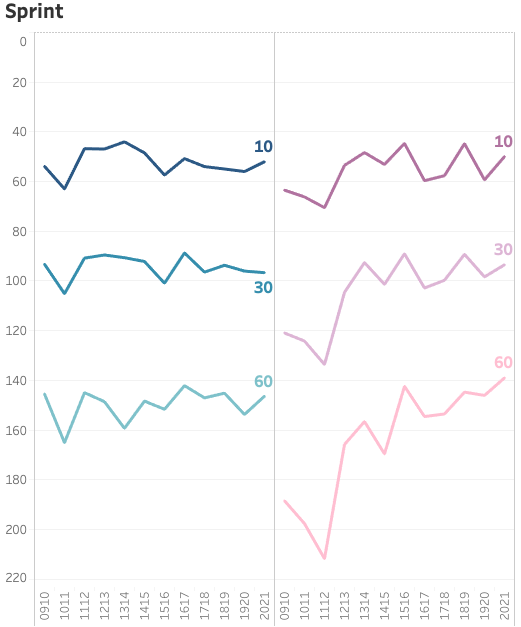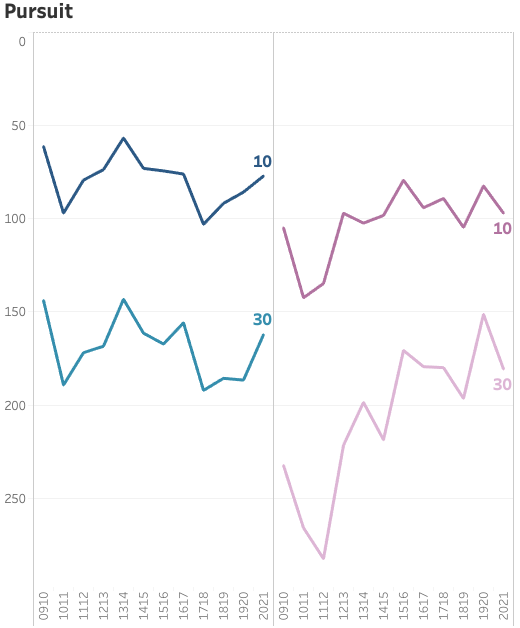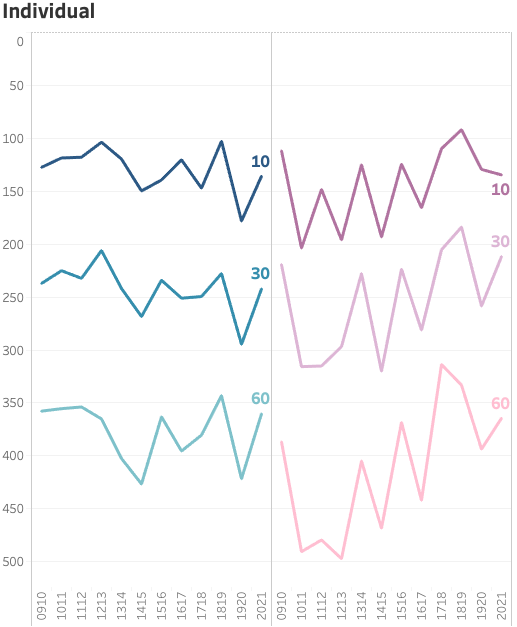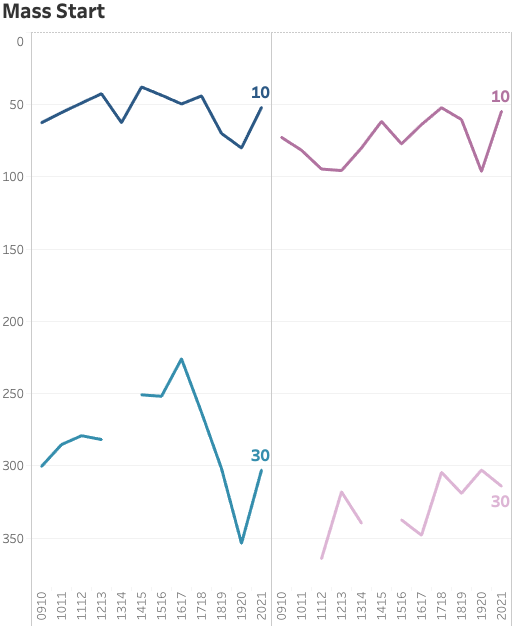As a follow up on my previous post, Number of winning athletes doubles in super exciting season, this analysis looks at the narrowing or broadening gap between performances in non-team biathlon races since the 2009-2010 season. Performance, in this case, is measured as the average number of seconds behind the race winner for the 10th, 30th and 60th ranked athletes. So on a seasonal average, how close to the leader are the top 10, top 30 and top 60 in races during the season and how does that compare to previous seasons?
For all charts below, men are on the left, women on the right.
Sprint
For the sprint events, we can see that the men’s field hasn’t changed much over the years and actually has gotten more stable for the top 30 and top 10. For the women, however, we can see the field has narrowed, especially with the “lower” athletes closing in on the top: the top 60 have gone from about 200 seconds back to about 140 seconds back. That’s a minute in just over 10 years! The top 30 and even the top 10 have also come a little closer, meaning the field is compressing and the differences between the fastest and the slowest are getting smaller.

Pursuit

For the pursuit the top 60 was removed as with 60 starters only and always a few DNSs or DNFs there typically is no 60th ranked athlete.
The picture is simular to the Sprint, where the men haven’t realy change much over the years, but the women’s field has significantly narrowed from 0ver 250 seconds behind the leader to about 180 seconds behind, more than a minute for the top 30 to get closer to the lead.
It should be noted that the time behind the lead here includes the time behind the race leader at the start (as per usual in pursuit races), so we’re not using absolute race times here.
Individual & Mass Start
The individual races have seen more fluctuations in the last couple of years for the men, but the gap has remained similar. For the women, again, we see the field closing in by almost a minute-and-a-half by the top60half a minute by the top 30 and about 10 seconds by the top 10. That is quite significant.
Lastly for the mass starts, with only 30 starters and occasionally some athletes not making the finish, we see a small widening of the gap for the men and more or less consistency for the women.


Conclusions
The performance gap for the men has stayed pretty much the same for all events, if anything widening a little for the mass starts. For the women however the gap has declined considerably for all events but mass starts.
An interactive version of the charts can be found here.
